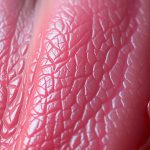Nosebleeds, medically known as epistaxis, can be a common and often frightening experience for many individuals. However, there is a medical procedure called nasal cauterization that can effectively address this issue. In this comprehensive guide, we’ll explore the intricacies of nasal cauterization, delving into the process, types of cauterization, medical conditions that may require this treatment, and what you can expect during the procedure.
Nasal cauterization is a medical intervention used to treat chronic or recurrent nosebleeds by targeting the small blood vessels within the nasal cavity. This procedure helps to seal off these vessels, preventing future bleeding episodes and providing relief for those suffering from persistent nosebleeds or epistaxis.
Whether you’re dealing with frequent nosebleeds or seeking a long-term solution, understanding the purpose and process of nasal cauterization can help you make an informed decision about your healthcare. Join us as we unpack the details of this effective treatment option and explore how it can address nasal blood vessels and nose cautery concerns.
Understanding Nasal Cauterization and Its Medical Purpose
Nasal cauterization is a medical procedure that utilizes controlled heat or chemicals to seal blood vessels within the nose, effectively stopping nosebleeds. This versatile treatment can address a variety of common conditions, including hereditary hemorrhagic telangiectasia and von Willebrand disease, which can cause frequent and persistent nosebleeds.
Chemical vs. Electrical Cauterization Methods
There are two primary approaches to nasal cauterization: chemical and electrical. Chemical cauterization involves the application of a topical agent like silver nitrate to the affected area, while electrocautery uses a small electric current to seal the blood vessels. Both methods are effective, and the choice between them is often based on the specific needs of the patient and the preferences of the medical professional.
Common Conditions Requiring Nasal Cauterization
Nasal cauterization is frequently used to treat the following conditions:
- Hereditary hemorrhagic telangiectasia (HHT): A genetic disorder that causes abnormal blood vessel formation, leading to frequent nosebleeds.
- Von Willebrand disease: A common inherited bleeding disorder that can result in recurrent nosebleeds.
- Persistent or severe nosebleeds from other causes, such as trauma or environmental factors.
When to Consider This Treatment Option
Nasal cauterization may be recommended when more conservative treatments, such as nasal packing or topical medications, fail to effectively control nosebleeds. It can be a highly effective solution for individuals who struggle with frequent or severe nosebleeds that disrupt their daily lives. By sealing the problematic blood vessels, this procedure can provide long-lasting relief and improved quality of life.

What to Expect During the Procedure
Before the nasal cauterization procedure begins, we’ll ensure your comfort by administering a local anesthetic. This will numb the area, minimizing any discomfort you may experience. Depending on your condition, we may also use a nasal endoscope to guide the process and ensure precise application of the cauterizing agent.
The cauterization itself typically takes just a few minutes to complete. During this time, you may feel a slight warming sensation, but the local anesthetic should prevent any significant pain. Once the procedure is finished, we’ll provide you with detailed instructions for your recovery period, which usually involves some nasal congestion and minor bleeding for a short time.
It’s important to follow our post-treatment guidance closely to ensure a smooth and successful recovery. With the proper care, you can expect to return to your normal activities within a day or two, feeling relief from the condition that brought you here in the first place.











